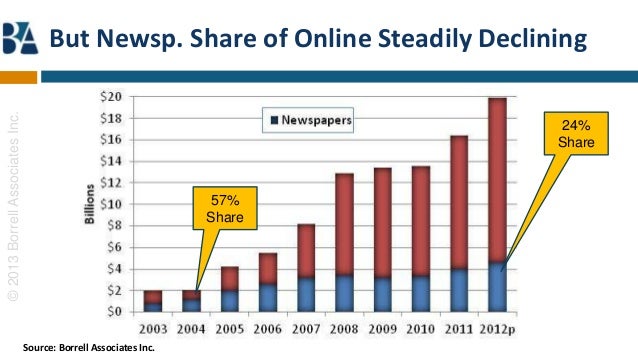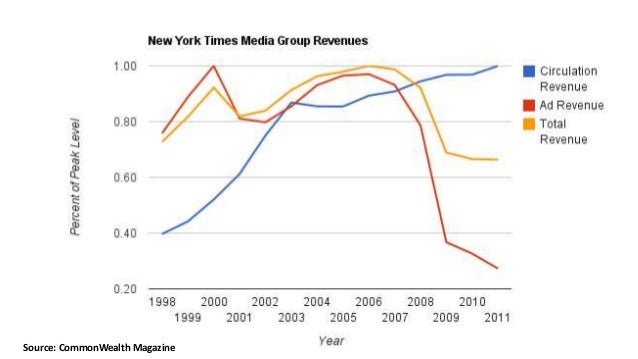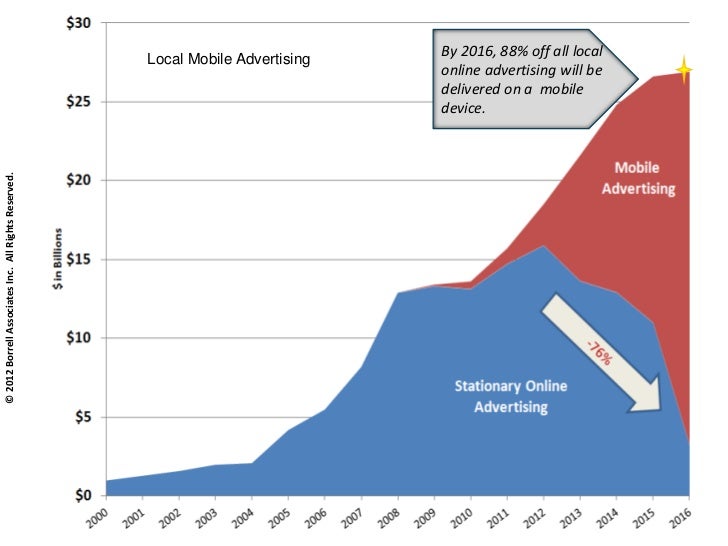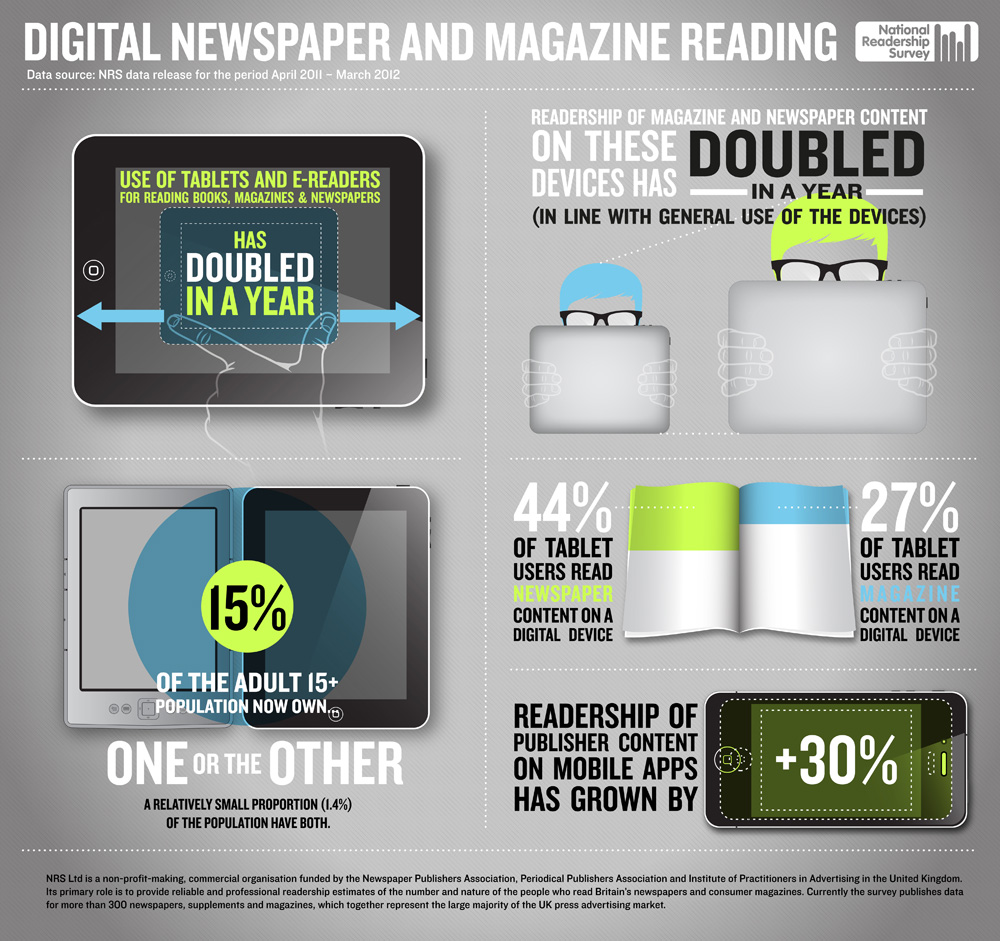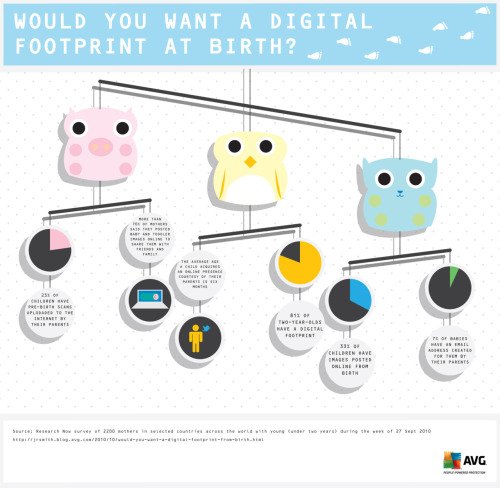The Pew State of the News Media 2013 report is out, and addresses a range of news outlets by media type. This post will look at Local TV News, and I'll start off noting that the report and numbers actually cover 2012.
The quick report - amount of local news programming is up, local TV advertising revenues are up (thanks to high levels of political advertising), but audiences for local TV news programs continues to decline. Local TV broadcasters also experienced revenue gains from retransmission fees (growing 30-40% a year recently), and continued growth in digital revenues and online advertising - although these segments account for only 10-12% of station revenues on average. Most revenue forecasts for 2013 expect a small decline, as modest basic growth in some areas are offset by the loss of political advertising. Long term forecasts suggest modest improvements in revenues over time, although stations will also face growing programming and personnel costs.
Local News Audiences
Audiences for local TV news has been generally declining for years. Some stations tried to counter this trend by expanding the amount of local news programming they scheduled. While this may have added some viewing, the numbers show that total audience numbers were declining across all broadcast times and all age groups. The report notes that the small gain in viewership in 2011 was wiped out in 2012.
In almost every sweeps period, both the ratings and shares for the main local news time slots declined. Local stations affiliated with the major networks saw audience decline an average of 6% (9% for the prime-time news programs common on Fox affiliates). While the decline in shares was smaller, the problem is that the overall ratings decline indicates that fewer people are watching any kind of TV at those times. As the report notes:
With fewer people watching broadcast TV in general, local stations have little hope of reversing the long-term decline in audience for news in key time slots.
Another indicator of long term decline is that the drop in viewing is highest among younger adults. Only 28% of 18-29 year olds indicate that they "regularly" watch local TV news broadcasts
There are indications that local TV news outlets haven't lost all of those users. People are increasingly going to online sources for local news and information.
“Are they watching us as much? No. But our online numbers are up dramatically,” said Scott Blumenthal, executive vice president for LIN Media. “We are not a TV station anymore as much as a provider of news on multiple platforms.”
Local TV news websites have been helped recently by the expanded use of paywalls for newspaper websites. Online tracking data suggests that when newspapers introduce paywalls or restrict free access to their online news sites, much of their traffic shifts to local TV news websites. Many local TV news websites are also pushing mobile-friendly sites and apps.
“Our audience proportionally is growing faster on mobile than on Web,” said Chip Mahaney, senior director of local digital operations for E. W. Scripps. “It used to be mobile was a small fraction [of our digital audience]. In some cases mobile has overtaken Web.”
Other research suggests that younger mobile audiences are leading this transition to alternative access to, and delivery of, local news and information. Some of the viewership decline, particularly among younger adults, may reflect a shift to alternative (digital and mobile) access behaviors, rather than a loss of interest in local news.
Local TV News Programming
2012 saw a continuation of recent trends in local TV news programming. There continues to be some expansion of local TV news hole, and in the number of news staff (in aggregate and on average - individual station numbers vary widely), and most TV news managers anticipate continuing to add staff over the near term.
As for staffing, surveys show an increased reliance on solo journalists (also known as "one-man-bands" or backpack journalists) who can cover news, shoot video, and produce stories for multiple media delivery.
“They’re looking for people who can do everything,” said Micah Johnson, president of MediaStars, an agency that represents TV news employees in contract negotiations.
Asking for more skills has not meant that local stations are willing to pay more. Average news salaries increased just 2% in 2011, and stations moved to lock in more news staffers into long-term contracts as a means of controlling costs.
Another way to keep costs under control is to share resources. Roughly one-fourth of broadcast TV stations airing local news have that news produced by another station in the market. More than half of the stations originating local news report feeding news stories to other TV stations, radio stations, or local cable channels in their market. The Pew report suggests that some types of sharing have stabilized and may be declining, as technologies continue to shift production preferences and costs.
The increasing news hole over time has not necessarily resulted in more local news stories. The number of edited package stories has dropped over time, and average story length has also fallen. In 2012, half of news stories ran under 30 seconds, while only 20% ran a minute or longer. A sampling of local newscasts showed that news packages accounted for only about a third of local TV newshole (down 20% from a 2005 study). In contrast, the program time for sports almost doubled from 2005 to 2012, and time for weather and traffic also increased. Combined, sports, weather and traffic coverage account for more than 40% of local news program content (by time). Those topics are also assuming greater importance - Pew reports that 20 of 48 morning and evening local newscasts they examined led with a weather report or story.
The Digital Front
Broadcasters were among the
first news media to develop websites, and local news and information was a frequent focus (Bates et al., 1997). For a while, local stations sought to limit online news coverage for fear that it might impact traditional viewing. Well, viewing of local TV news broadcasts declined anyway, and now local stations are giving more emphasis to expanding their digital offerings as a way to expand their reach, and particularly to recapture the younger audiences that are rapidly deserting local TV news broadcasts.
“For TV, online generates what TV considers ‘extra revenue’ and helps
bring at least some additional audience to the TV screen,” said Bob
Papper, who produces the annual RTNDA broadcast news reports.
As a results many local TV stations and newsrooms (who often have separate websites and social media feeds), are pushing into social media and mobile feeds.
Mobile is becoming a larger driver of Web traffic, particularly outside
of working hours. At WRAL in Raleigh, N.C., it accounts for 15% of
digital visits and could double in six months, according to the
station’s general manager, John Conway. “It’s a good way for us to grow
our audience at times when historically you’d see somewhat of a trail
off of your traffic,” he said.
Research does show that these online digital efforts are attracting users and generating traffic. Perhaps most importantly, research is starting to suggests that mobile users actually seek and consume more news and information than typical news audiences. With the rapid expansion of mobile technologies, those in the news industry are hopeful that mobile may lead to a news renaissance of sorts.
The problem with these digital efforts has been that its been difficult to evaluate their impact and effectiveness. Online local digital advertising revenues, while growing at a faster rate, are still tiny compared to broadcast advertising revenues. Similarly, with all of the current focus on online metrics, there aren't any widely accepted (or industry-standard) measures of whether a local station's online, mobile, and social media users have actually expanded their audience. Nor is there any clear indication of whether social media is delivering on its potential to increase audience engagement. The potential is there, and stations are optimistic that good things are happening, but stations will need better measures to get top dollar from advertisers.
In sum, the prospects for local TV news is perhaps best described as "hopeful." Revenues, employment, and newshole appear to be slowly growing over time, even as traditional viewing of local TV news broadcasts continue to decline. The rise of digital, online, and mobile are providing a plethora of new opportunities for local TV news outlets, although revenue gains from these activities have yet to really kick in. The real clear change is in the nature and packaging of local news and information - with less focus on investigative and serious news reporting, and more reporting of sports, weather, traffic, and quick headlines, promotions, and social buzz (on social media). There's growing concern that these shifts in news content might be economically beneficial to local broadcasters, but perhaps not as broadly helpful to society.
Sources -
Local TV: Audience Declines as Revenues Bounce Back, Pew State of the News Media 2013
The Changing TV News Landscape, Pew State of the News Media 2013
"WebTV: How Broadcast Television is Using the World Wide Web," Bates et al. research paper.

